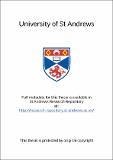Layered lithium manganese oxide cathodes
Abstract
The synthesis, characterisation and electrochemical performance of layered lithium manganese oxide materials have been investigated in terms of their application as an intercalation cathode in rechargeable lithium batteries. Non-stoichiometric LiₓMnᵧO₂, stoichiometric LiMnO₂ (α-NaFeO₂ type) with doped forms, LiₓMn₁₋ᵧMeᵧO₂ and LiMn₁₋ᵧMeᵧO₂ (where Me = Al, Mg, Li, Ni, Co), were prepared by solid-state and solution synthesis routes coupled with ion exchange from sodium precursors. These materials were investigated by X-ray and neutron powder diffraction, as well as chemical and compositional analysis, SEM, TEM, surface area and galvanostatic cycling measurements.
The structure and performance of non-stoichiometric materials is highly dependant on the synthesis conditions and ion exchange process which determine the defect chemistry. LiₓMnᵧO₂ exhibits high capacities, 190mAhg⁻¹ at a rate of 25mAg⁻¹ (C/8) with good retention of this capacity (fade rate of ~0.1% per cycle). However, performance is hindered by a first cycle charge capacity which is less than the subsequent discharge. This is a problem for lithium ion cells which require a slight excess of Li on the first charge to form the SEI layer on the carbon anode.
The performance of LiMnO₂ is less dependant on synthesis conditions, exhibiting high discharge capacities, ~200mAhg⁻¹at 25mAg⁻¹with minimal fade rate and essentially theoretical charge capacity on the first cycle. Doping of layered materials was found to result in a reduction in the initial dip and rise in capacity over the first few cycles, improved rate capability and first cycle efficiency for non-stoichiometric materials as well as higher overall capacity >200mAhg⁻¹. Structural transformation from a layered to spinel-like configuration on cycling has been investigated. Performance of the spinel-like material formed in situ is markedly superior to directly prepared spinels, being attributed to the formation of a nanostructure able to accommodate the lattice strain caused by the Jahn-Teller distortion. Ball milling and variation in carbon and Kynar concentration were investigated as well as the possibility of electrodes containing both stoichiometric and non-stoichiometric components, to permit an excess of charge capacity on the first cycle in order to accommodate the irreversible losses due to SEI surface layer formation when cycling against a carbon based anode.
Type
Thesis, PhD Doctor of Philosopy
Collections
Items in the St Andrews Research Repository are protected by copyright, with all rights reserved, unless otherwise indicated.

